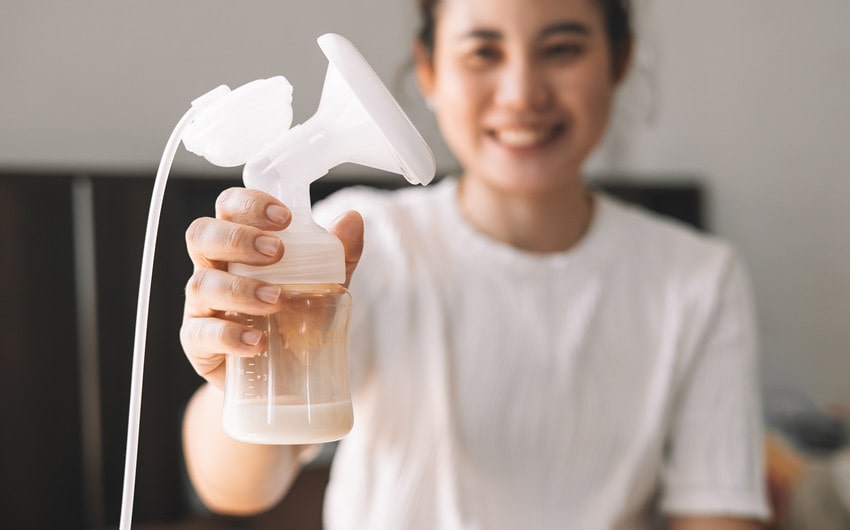Mastering the Electric Breast Pump: What I Wish I Knew as a New Mom
As a new mom, figuring out breastfeeding can feel like stepping into a whole new world—one with a lot of opinions, not-so-clear advice, and let’s be honest, more gear than you expected. And then there’s the electric breast pump. It promises convenience and freedom, but… how exactly does it work? And is it really that helpful?
Well, I’ve been there. And I can tell you—it can make a huge difference. But like anything new, it takes a little getting used to.
What Is an Electric Breast Pump?
At its core, an electric breast pump is a device that helps you express milk using a small motor to create suction. It mimics your baby’s sucking to encourage let-down and milk flow. Sounds simple, right?
But honestly, the biggest thing for me was how much easier it made things once I got the hang of it. I didn’t have to worry about timing feedings down to the minute or skipping something important because I couldn’t step away to nurse. With an electric pump, I could store milk and buy myself some flexibility—and that, especially in the early days, felt like gold.
Most pumps have adjustable suction and speed settings, so you can find what feels right (which definitely matters—comfort is not optional). Some even come with features like hands-free options or coolers built right in. I won’t say it’s magical… but it does help a lot.
How Does an Electric Breast Pump Work?
Electric pumps use a motor to create rhythmic suction, sort of like a baby’s nursing pattern. This draws milk out, which flows into a bottle or a storage bag. You press a few buttons, adjust the suction and speed to your liking, and let the pump do its thing.
Basic Mechanism
This is what powers the whole thing. It creates the pull that helps express milk. You’ll notice the pump works in cycles—short, quick pulses at first (to mimic initial sucking) and then longer, deeper ones once let-down kicks in.
Adjustable Settings
Most pumps let you change the suction strength and speed. I usually start with lower suction, especially if I’m feeling a bit sore or tired. Then I increase as needed. It’s worth experimenting—what works for someone else might not be right for you.
Single vs. Double Pumping
You can choose to pump one breast at a time (single) or both at once (double). I’ve found double pumping saves me time and often boosts milk supply—but I know moms who prefer single pumping because it feels a bit more relaxed. No wrong answer here.
Step-by-Step: How I Use My Electric Breast Pump
Let’s keep it simple. Here’s my general routine:
- Assemble Everything: I lay out all the parts—motor, tubing, shields, bottles—and double-check the connections. A loose seal can throw everything off.
- Set the Suction: I start low. If it’s early in the day and I’m feeling full, I might go a little stronger. But I always give myself a minute to adjust.
- Position the Shield: This part matters. The flange (the funnel-shaped shield) should center over the nipple, snug enough to seal but not painfully tight.
- Start Pumping: I press start, take a breath, and try not to overanalyze. I’ve learned that watching the bottle too closely doesn’t make the milk come faster.
- Monitor & Adjust: I keep an eye on the flow. If it slows or feels weird, I pause and shift the shield or settings. Sometimes it’s a small thing.
- Store the Milk: Once I’m done, I seal and label the bottles or bags and get them into the fridge or freezer right away.
- Clean Up: Honestly, not my favorite part. But I disassemble, wash, and air-dry everything that touched milk. A little routine goes a long way.
Why I Think It’s Worth It
There are days I genuinely don’t know how I’d manage without my pump. It’s not always perfect, but it helps in some big ways. The Momcozy Mobile Style™ Hands-free Slim Breast Pump M6 has been a game-changer for me. It’s compact, discreet, and doesn’t tie me down to one spot, something I didn’t realize I needed until I used it.
- Convenience – I can pump while answering emails or sipping coffee (or just sitting in silence, let’s be real).
- Adjustability – Finding the right settings made it way more comfortable.
- Time-Saving – Double pumping cuts my session time down significantly.
- Multitasking – Hands-free options let me kind of do other things.
- Storage Solutions – Some models keep milk cool, which is helpful if I’m out or not near a fridge.
It’s not just about ease. It’s about having more options.
Tips for Effective Pumping
- Pump when you’re full: I get better output if I pump shortly after waking up or a couple of hours after a feeding.
- Relax first: I know it sounds cliché, but stress really does affect milk flow. Deep breaths, a glass of water, maybe some music.
- Massage helps: A quick, gentle massage before and during pumping helps get things moving.
- Hydrate: I keep a big water bottle nearby. Staying hydrated definitely makes a difference.
- Check the fit: The flange needs to fit well, not too small, not too big. A poor fit can lead to soreness or poor suction.
Common Challenges and Solutions
It’s not always smooth. A few things have tripped me up:
- Suction Weakness: Check the connections. If something’s loose or the valve isn’t sitting right, it won’t pull effectively.
- Discomfort While Pumping: Try lowering the suction or adjusting the flange position. Don’t push through pain—it’s not supposed to hurt.
- Milk Supply Issues: Sometimes it’s just timing or stress. I try to stay consistent with pumping times and drink plenty of water.
- Cleaning Hassles: I eventually got a steam sterilizer, and wow—that made life easier.
Cleaning & Maintenance
After every session, I clean everything that touched milk—flanges, bottles, and valves. Warm soapy water works fine, though I sometimes pop parts in the dishwasher. About once a day, I steam-sterilize the pieces just to be safe.
I also check the little membranes and valves every week or so. If they’re cracked or stretched out, it’s time for replacements. Doesn’t take long, but it helps a lot with performance.
Conclusion
Using an electric breast pump might feel intimidating at first, but it really can become part of your rhythm. There’s a bit of trial and error—and honestly, some days are just easier than others—but once you find your groove, it’s incredibly empowering.
I don’t think it replaces the connection of feeding directly, but it gives me options. It gives me a bit of freedom. And in the middle of everything else that comes with being a new mom, that’s no small thing.







